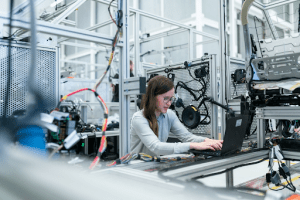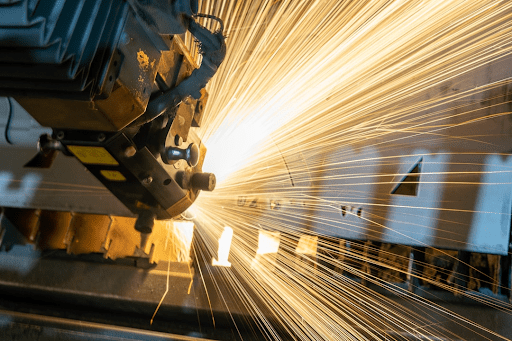IIoT, or the Industrial Internet of Things, is a revolutionary step forward in the world of manufacturing and business productivity as a whole. Minimizing downtime, building operations technology advances right into the ongoing processes, and adding reliability for the supply chain are all major components of the IIoT framework.
Many in the industrial industry once asked “What is IIoT?” but as the Internet of Things landscape continued to progress, these implementations became standard practice within manufacturing and other industrial centers. Put simply, the Industrial Internet of Things is a framework for monitoring and solving problems within the industrial workspace. Built off of the IoT network, the Industrial IoT provides the same foundation of data analysis and data management that consumer users have been celebrating for many years.
The IIoT is a step forward for problem monitoring.
Maintenance and monitoring are key features of the IIoT approach to business in the manufacturing sector. Manufacturing hubs are improving their automation more and more each year, and with the installation of Industry 4.0 updates, the IIoT has become standard within the space. This is essentially accomplished with the embedded sensors and relay systems that are built into virtually all new machines and tools that hit the factory floor, providing analysts in the back office with a constant stream of real-time data surrounding the production methods and processes.
The ability to head off issues before they become large enough to create lasting and expensive damage is an important component of the IIoT framework. The monitoring tools that this process allows for gives factories and manufacturing centers the ability to introduce better safety measures, greater production controls, and much more. Yet sensors are nothing without the data analysis to back them up. This is where automation comes into play. Within the Industrial IoT mindset is a drive toward greater automation of analysis processes and other factors within the production cycle.
Automated data management gives stakeholders the information they need in real time and allows for greater confidence in any decisions that must be made for production efficiency.
Environmental protections are placed front and center.

In addition to the streamlining of production processes and safety measures, the IIoT provides businesses with the information and tools they need to make significant changes in pursuit of environmental protection targets. Industrial players have long been a key source of greenhouse gas and other environmentally damaging factors.
Yet modern businesses are working hard to incorporate new ways forward that address and even reverse these effects.
The modern manufacturing outlet requires extensive power and supply chain considerations, and with the use of IIoT-enabled sensor arrays and data monitoring systems, reducing waste and additional environmental burdens are becoming built-in features of responsible manufacturing practices. The entire global consumer network is getting behind these changes, so keeping up with both a responsible outlook and consumer sentiment is crucial to maintaining great profit margins, high-quality products, and low-cost structures over the long term.
The Industrial Internet of Things is a revolutionary change in the way that manufacturers do business from top to bottom. Everything from reporting to stakeholders and shareholders to the nuanced perfection of internal processes is reliant on the data that an IIoT-ready facility can provide in real time. With the help of these installations, factory floors are getting smarter, and the workforces that commute to these spaces are better protected from industrial accidents and more ready for an integrated future of work than ever before. Get on board with the changes and implement your own IIoT-enabled systems for greater peace of mind, control, and knowledge about the machinations of your manufacturing center.







